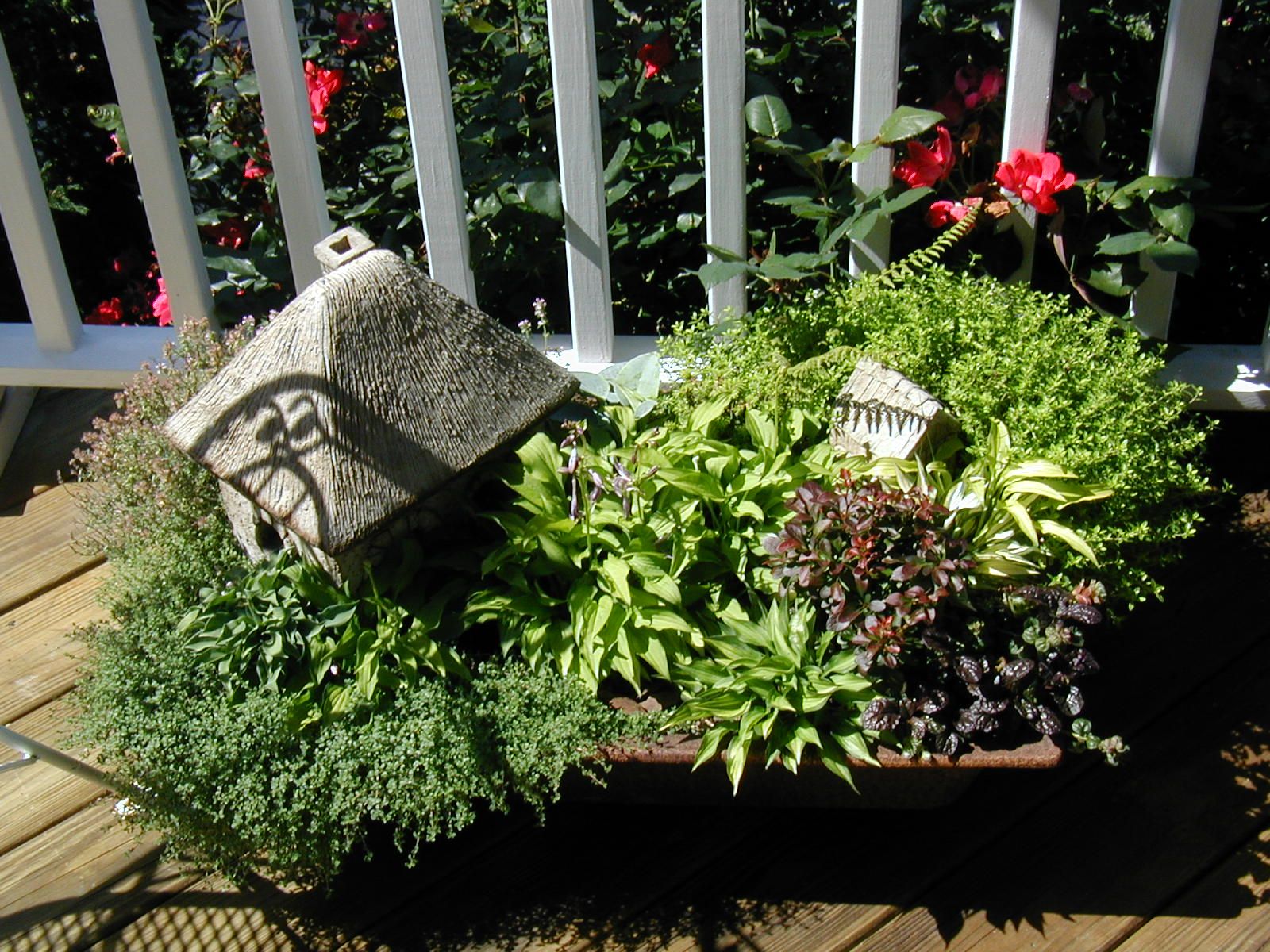During the summer, our patios, balconies, and porches become like additional rooms in our home. They're lovely spaces to relax and enjoy fresh air, especially when nicely designed. Adding potted plants to your outdoor areas helps them feel soothing and inviting.
Unfortunately, many of the flowers commonly used in container plantings will fail to thrive if you're dealing with a shaded spot. Here are some simple tips to help you create a lush patio or outdoor space, even in the shade.
Selecting Containers
One of the most important considerations for your patio shade garden will be selecting appropriate containers and planters. While your style should play a significant role, there are a few other key features you should look for in containers.
The first is that the container or planter has proper drainage. This is key to healthy plants. Select a pot that already has drainage holes or is a material that you can make holes in with a drill. To keep things neat, it's also a good idea to find a tray that fits under it properly to catch any water.
The next thing you'll want to consider is the planter's size. Smaller containers are nice for setting on patio coffee or end tables. Large planters make excellent statement pieces and are great for mixing various plants in. As you select planters, think about the mature size of the plants you'll be growing. At Pine Forest Gardens, you can find our mature hosta sizes listed on the website, and we put the plant size on the pot tag of each plant we ship.
Lastly, you'll want to consider your climate. Perennials like hostas can survive in container gardens year-round, even in cold areas, but you'll need planters that can hold up to the freeze and thaws of winter. Plastic, ceramic, wood, terracotta, and metal planters all work for shade plants, but some like terracotta will need to be put in an unheated garage over the winter, so they don't crack.
Selecting Plants
Don't think a shade patio garden has to be boring! Many interesting and colorful plants will thrive in shades spaces. Plants that tolerate shade include:
- Hostas
- Heuchera (Coral Bells)
- Heucherellas
- Ferns
- Begonias
- Oxalis (fall shamrock)
- Coleus
- Salvia
- Ivy
- Geraniums
While we carry other plants at Pine Forest Gardens, we specialize in shipping unique hostas right to your garden.
Our mini hostas are perfect for smaller containers, fairy gardens, or edging large planters. Small and medium hosta varieties make great centerpieces for medium-sized containers and work well with a blend of other plants. Our large and giant hostas make a statement alone or with other shade-loving plants. They look excellent in pairs framing entryways to large patios and porches.
We love blending different colors and textures to help plants stand out. The large smooth leaves of hostas like Earth Angel are an excellent backdrop for more delicate-looking foliage like oxalis or maidenhair ferns.
Bright colored Heuchera stand out when paired with blue hostas like Blueberry Muffin. Variegated hostas like Mini Skirt look stunning paired with the flowers and green foliage of salvia and geraniums. Try playing with different colors and textures to create eye-catching arrangements that match your style.

Planting Your Patio Shade Garden
After choosing your plants and containers, it's time to get growing! You'll want to fill your containers with potting mix. Potting mixes drain better and don't compact like ordinary garden soil. We like to add a bit of perlite or bark mulch to larger planters.
Again, it's essential to look at the mature spacing of all your plants and consider this when planting them. Plants packed too tightly into a container will lack the necessary airflow, nutrients, and sunlight and fail to thrive. As a seasoned gardener, I have planted quite a few plants too close together over the years and regretted it.
Plant your hostas and other plants just like you would out in the garden. Create a hole in the soil so that the clump is level with the top of the soil. For transplants in pots, the soil should be at the same level that it was in the previous container. Gently pack in the soil around your plants and water them in thoroughly.
We like to add a bit of slow-release fertilizer after planting. We use Osmocote fertilizer with an NPK (nitrogen-phosphorus-potassium) ratio of 15-9-2. Hostas aren't that picky, but you may want to research their specific requirements for other plants. Always follow the application rates on fertilizer packages and avoid putting fertilizer directly onto any part of the plant as fertilizer can burn them.
Maintaining Your Patio Shade Garden
Hostas and other perennials can help your space look lush and inviting for many years as long as you care for them. They need proper watering, fertilizing, and occasionally repotting to thrive long-term.
Water your shade patio garden consistently. You want to keep the soil moist but not soggy. Containers typically dry out faster than plants in the garden, especially in hot weather. Be sure to find someone to care for plantings if you take a vacation.
Fertilize your container planted perennials like hostas once per year. Fertilizing them with a slow-release fertilizer in the spring can help them put on lush foliage.
Hostas and many other perennials should be re-potted once every two to three years. Potting soil loses nutrients and becomes compacted over time. Repotting your plants provides fresh nutrients and allows proper airflow and water flow to the roots. You can also add a bit of new potting soil to the top each year to keep them looking their best.
Creating an inviting outdoor space can seem challenging, especially when dealing with a shaded area. Thankfully it is possible. Use these tips to create a lush patio, porch, or other outdoor living space, even in the shade.

